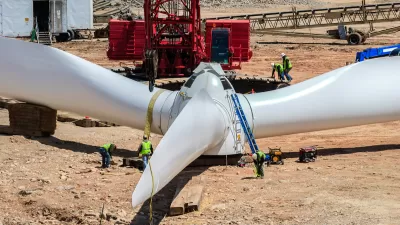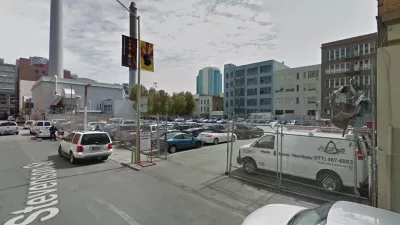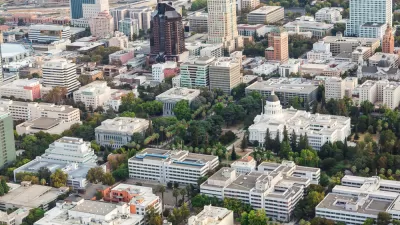A solar energy facility planned for Fairfield County, Ohio is in critical condition after local governments express their displeasure.

Ohio Power Siting Board (OPSB) staff have recommended against allowing a new solar energy facility in Greene County, Ohio, based on concerns about protecting the “rural aesthetics” of the area.
“Opposition from local governments, primarily concerned about the rural aesthetics of the area, trump the Kingwood Solar’s signed leases with landowners, the payroll and tax benefits for locals, and clean electricity for the grid,” reports Jake Zuckerman for the Ohio Capital Journal on the latest development in the ongoing controversy.
OPSB could still overrule the staff recommendation, however. The staff’s recommendation reverses an earlier draft recommendation, reports Zuckerman, after local politicians voiced their displeasure. According to Zuckerman, the episode “underscores locals’ ability to thwart renewable projects, an ability that doesn’t apply for fossil fuels.”
“In 2015, the Ohio Supreme Court overturned Munroe Falls’ ordinances seeking to ban fracking, determining the state has ‘sole and exclusive authority’ as to the regulation of oil and gas wells,” according to the article.
Zuckerman reported in a separate article earlier in August that ten Ohio counties have passed laws to prohibit the development of solar and wind energy after following a new state law granting local control over the issue.
More on the consequences of a potential rejection of the solar plant’s permit are included in the source article.
FULL STORY: Ohio May Soon Kill a Solar Project Due to Concerns Over 'Rural Aesthetic'

Planetizen Federal Action Tracker
A weekly monitor of how Trump’s orders and actions are impacting planners and planning in America.

Congressman Proposes Bill to Rename DC Metro “Trump Train”
The Make Autorail Great Again Act would withhold federal funding to the system until the Washington Metropolitan Area Transit Authority (WMATA), rebrands as the Washington Metropolitan Authority for Greater Access (WMAGA).

The Simple Legislative Tool Transforming Vacant Downtowns
In California, Michigan and Georgia, an easy win is bringing dollars — and delight — back to city centers.

In These Cities, Most New Housing is Under 441 Square Feet
With loosened restrictions on “micro-housing,” tiny units now make up as much as 66% of newly constructed housing.

Albuquerque’s Microtransit: A Planner’s Answer to Food Access Gaps
New microtransit vans in Albuquerque aim to close food access gaps by linking low-income areas to grocery stores, cutting travel times by 30 percent and offering planners a scalable model for equity-focused transit.

This City Will Pay You to Meet Your Neighbors
A North Kansas City grant program offers up to $400 for residents to throw neighborhood block parties.
Urban Design for Planners 1: Software Tools
This six-course series explores essential urban design concepts using open source software and equips planners with the tools they need to participate fully in the urban design process.
Planning for Universal Design
Learn the tools for implementing Universal Design in planning regulations.
Smith Gee Studio
City of Charlotte
City of Camden Redevelopment Agency
City of Astoria
Transportation Research & Education Center (TREC) at Portland State University
US High Speed Rail Association
City of Camden Redevelopment Agency
Municipality of Princeton (NJ)





























